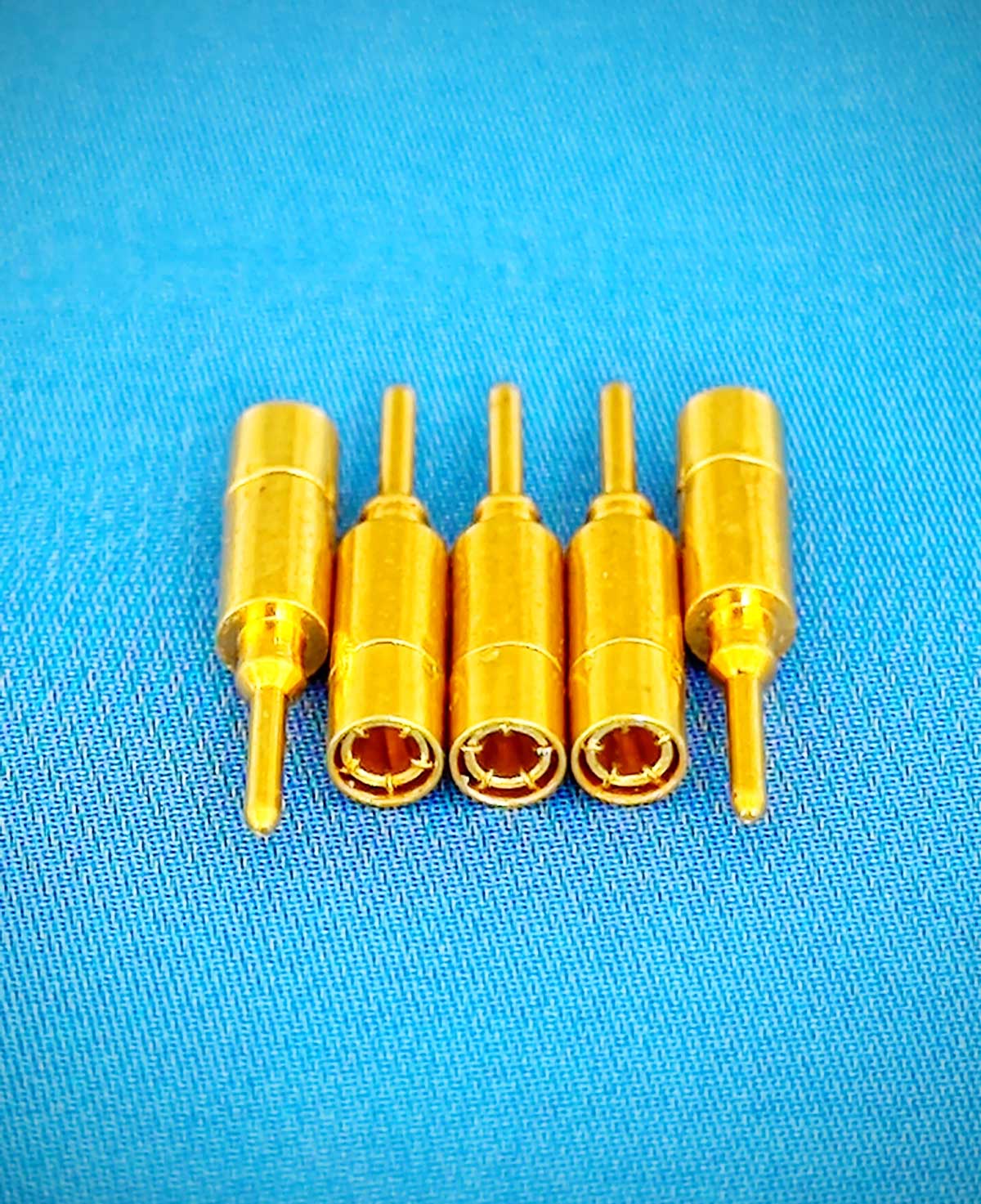线簧插孔质量标准Quality standards for line spring socket
2024-07-26 来自: 华海电器 浏览次数:
线簧插孔的质量标准涵盖了多个方面,以确保其在不同应用场景中的可靠性和性能。以下是主要的质量标准:

1. 电气性能标准
· 接触电阻:插孔在规定的电流和电压下,接触电阻应小于特定值(通常小于10毫欧),以保证低电阻连接和高效的电流传输。
· 绝缘电阻:插孔的绝缘部分需具有高绝缘电阻,以防止电流泄漏和短路,确保电气安全。
· 耐电压:插孔应能承受一定电压而不发生击穿现象,保证电气安全。
2. 机械性能标准
· 插拔寿命:插孔应能经过数千次甚至数万次的插拔操作后,仍保持良好的接触性能和机械强度。
· 插拔力:插拔力应在规定范围内,以确保连接稳固同时便于操作。
· 振动和冲击耐受性:插孔在受到振动和冲击时,应能保持正常的连接状态和性能。
3. 材料标准
· 金属材料:如簧片应采用高导电性和弹性的金属材料(如铍青铜),其成分和性能应符合相关标准。
· 绝缘材料:绝缘部分需具备良好的绝缘性能、耐高温性和耐腐蚀性。
4.尺寸和公差标准
· 尺寸公差:插孔的内径、外径、深度等尺寸应严格控制在设计要求的公差范围内,以确保与插头的精确配合。
5. 环境适应性标准
· 温度范围:插孔应能在规定的高低温环境下正常工作,并且性能不受明显影响。
· 湿度适应性:插孔应在一定湿度条件下保持良好的电气和机械性能。
· 防护等级:插孔的防尘、防水等防护能力需达到相应的标准(如IP等级)。
6. 可靠性标准
· 平均故障间隔时间(MTBF):用于衡量插孔的可靠性和稳定性。
· 质量一致性:同一批次产品的性能和质量应保持较高的一致性。
在高精度电子设备中,对线簧插孔的接触电阻可能有极其严格的要求,而在一些工业应用中,如汽车电子系统中,插孔需要能承受剧烈的振动和冲击。总之,线簧插孔的质量标准因应用场景和行业要求不同而有所变化。
Quality standards for line spring socket
The quality standards for line spring sockets encompass multiple aspects to ensure their reliability and performance in various applications. The main quality standards include:
1. Electrical Performance Standards
· Contact resistance: The contact resistance of the socket should be less than a specific value (usually less than 10 milliohms) under specified current and voltage to ensure low-resistance connection and efficient current transmission.
· Insulation Resistance: The insulating part of the socket should have high insulation resistance to prevent current leakage and short circuits, ensuring electrical safety.
· Dielectric Strength: The socket should be able to withstand a certain voltage without breakdown, ensuring electrical safety.
2. Mechanical performance standards
· Insertion and extraction lifespan: The socket should maintain good contact performance and mechanical strength after thousands or even tens of thousands of insertion and extraction operations.
· Insertion and extraction force: The insertion and extraction force should be within the specified range to ensure a secure connection while being easy to operate.
· Vibration and impact tolerance: The socket should maintain normal connection status and performance when subjected to vibration and impact.
3. Material standards
· Metal materials: Spring pieces, for example, should be made of highly conductive and elastic metal materials (such as beryllium bronze), with their composition and properties meeting relevant standards.
· Insulating materials: The insulating part should have good insulating properties, high-temperature resistance, and corrosion resistance.
4. Size and tolerance standards
· Size tolerance: The inner diameter, outer diameter, depth, and other dimensions of the socket should be strictly controlled within the tolerance range of the design requirements to ensure precise fitting with the plug.
5. Environmental adaptability standards
· Temperature range: The socket should work normally in a specified high and low-temperature environment without significant performance degradation.
· Humidity adaptability: The socket should maintain good electrical and mechanical performance under certain humidity conditions.
· Protection level: The dustproof, waterproof, and other protective capabilities of the socket should meet the corresponding standards (such as IP rating).
6. Reliability standards
· Mean time between failures (MTBF): Used to measure the reliability and stability of the socket.
· Quality consistency: The performance and quality of products in the same batch should maintain high consistency.
In high-precision electronic devices, there may be extremely strict requirements on the contact resistance of wire spring sockets, while in some industrial applications, such as automotive electronic systems, sockets need to endure severe vibration and impact. In summary, the quality standards for wire spring sockets vary depending on the application scenario and industry requirements.





